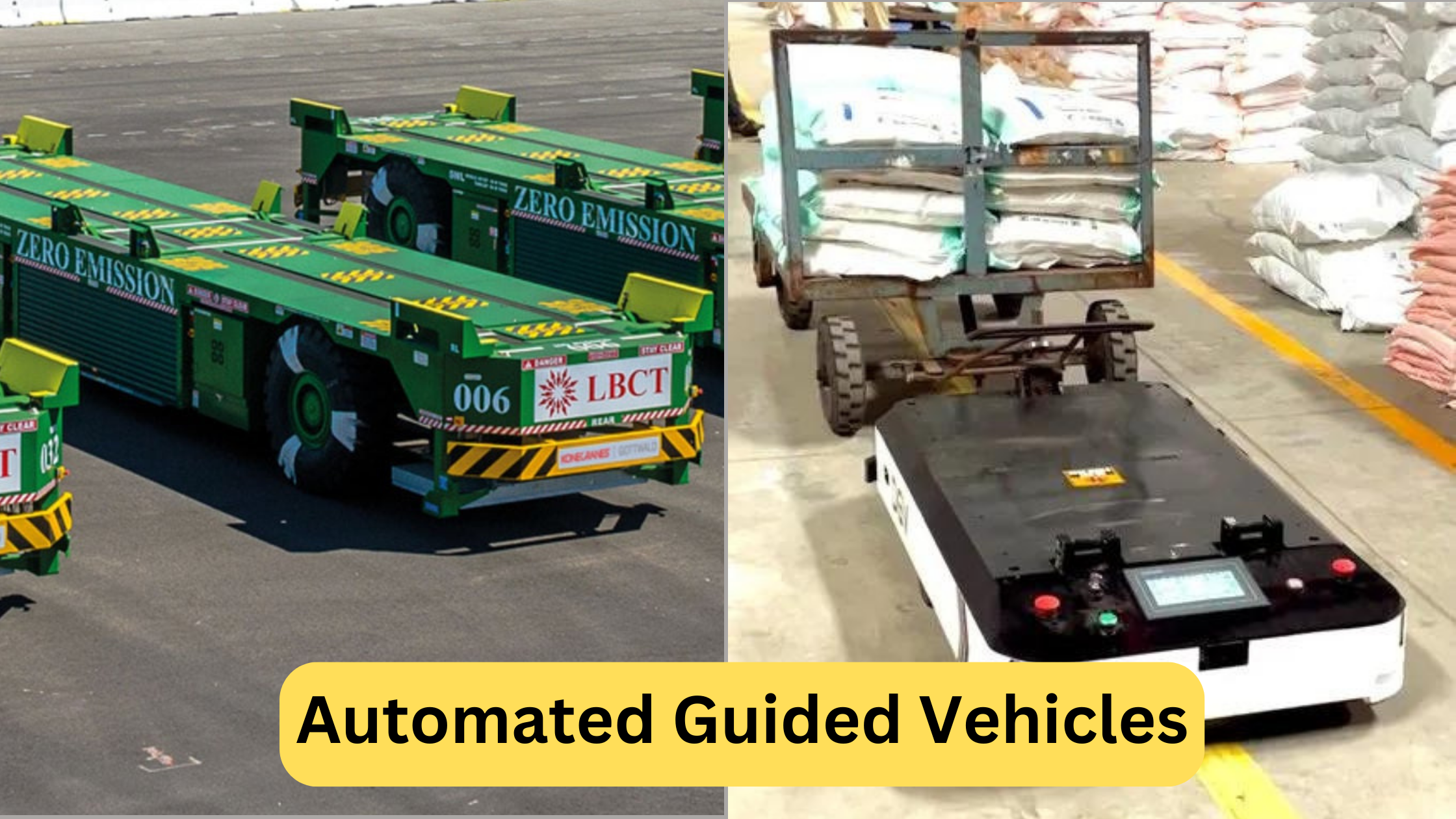Automated Guided Vehicles
Automated guided vehicles (AGVs) are material handling systems or load carriers that move autonomously throughout a warehouse, distribution center, or manufacturing facility without an onboard operator or driver. They are also referred to as self-guided vehicles or autonomous guided vehicles. In this post, we’ll explore the various types of AGVs, their meaning, how they operate, and their benefits.
Utilization of AGVs
Large amounts of material are repeatedly moved using automated guided vehicle systems, which take over from manual carts, conveyor systems, or forklifts in certain situations.
AGVs are employed in many different settings. They are frequently utilized for the transportation of raw commodities including paper, rubber, plastic, and metal. AGVs, for instance, can carry supplies straight to production lines or move raw materials from receiving to the warehouse. Without the need for human involvement, AGVs continuously and reliably supply the raw materials required, guaranteeing uninterrupted manufacturing processes.
Read More: The Future of Next level Underwater Robotic
Autonomous Guided Vehicle Types
Automated guided vehicles are available in several varieties. While many AGVs resemble other vehicles that are handled by humans, they are made to function without direct human supervision or involvement.
Driverless Guided Vehicles
The most basic kind of AGV with the fewest characteristics is called an automated guided cart (AGC). Simple navigational systems like magnetic tape may be as sophisticated as sensor-based navigational systems that employ artificial intelligence (AI) to find their way around. They are frequently utilized in sorting, storage, and cross-docking applications and are capable of transporting a wide range of items, from tiny pieces to filled pallets.
An automated hospital cart transporter (AGC) can be used to move small, compact items, including meals and empty food trays, clean or soiled linens, biohazard waste, or sterile supplies, across a hospital. Labor expenses can be decreased by using automated hospital cart transporters, which eliminate the need for a staff person to physically push the cart from one location to another.
Agvs For Forklifts
Another popular kind of AGV is the fork vehicle, sometimes known as the forklift automated guided vehicle. They are made to carry out the same tasks as a forklift controlled by a person, such as moving pallets, but without a human operator.
Dragging Agvs
In a configuration akin to a train, towing vehicles, also known as tugger automated guided vehicles, tow one or more non-powered, load-carrying vehicles behind them. Powered towing vehicles are on wheels and are sometimes referred to as autonomous trains. Longer distances involving big goods are frequently transported using tugger automated guided trucks. They could have many locations for pick-ups and drops along a predetermined route within a plant or warehouse.
Load Handlers For Units
Unit load handlers transport single units, such a pallet or bag containing several things, or discrete loads, like individual objects.
Carriers Of Heavy Burden
Heavy weight carriers are a type of AGV utilized in big assembly, casting, and coil and plate transfer applications for the largest loads. Certain heavy-duty load carriers can load themselves and may be steerable in three directions (standard, pivot, or omnidirectional).
Advantages of Automatic Guidance Vehicles
AGVs are very advantageous in manufacturing and storage.
Boost productivity and efficiency
AGVs are predictable and dependable for repeated activities and boost productivity and efficiency because of their autonomous operation. Both needless walking and the strenuous physical effort involved in material transportation are eliminated by AGVs. They also set the pace for employees, which helps to keep coworkers focused. Collaborative mobile robots, such as AGVs, assist associates in completing tasks by minimizing human mistake. This enhances order picking accuracy and reduces product loss and misplacing. Collaborative mobile robots maximize resource usage by using AI to prioritize tasks and optimize routes.
Regular expenses
AGVs are less expensive to acquire than human labor since they are usually purchased on a per unit or per rental term basis, as opposed to human labor, which is subject to change depending on demand and market circumstances.
Adaptability
While some AGVs need rerouting guide wires or other infrastructure in order to change a vehicle’s route, others give the flexibility of readily changing routes. Additionally scalable are automated guided vehicles, which may add more units in response to demand.
